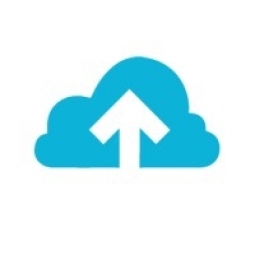Technology Category
- Functional Applications - Computerized Maintenance Management Systems (CMMS)
- Functional Applications - Enterprise Asset Management Systems (EAM)
Applicable Industries
- Glass
- Healthcare & Hospitals
Applicable Functions
- Facility Management
- Maintenance
Use Cases
- Asset Lifecycle Management
- Inventory Management
Services
- System Integration
About The Customer
The customer is one of the largest health insurance companies in the U.S., serving more than 2 million people. With over 3,000 employees, their organization delivers programs through a network of thousands of doctors, healthcare providers, and hospitals. They had multiple workplace management systems in place, which were causing inefficiencies and errors. The company needed a more streamlined and efficient system to manage their operations, and chose Nuvolo Connected Workplace to consolidate their multiple systems into one.
The Challenge
The customer, one of the largest health insurance companies in the U.S., was struggling with multiple workplace management systems. The Facilities Management team was using a computerized maintenance management system (CMMS), corporate was using ServiceNow for IT-related requests, and the Space Management team had its own separate system. This led to a 'swivel chair' process where data was manually entered into multiple systems, leading to unnecessary time and effort, and often resulting in errors. The Space Management team was also using email and spreadsheets to track workstations and handle move planning, which was inefficient and error-prone. The company realized they needed a more streamlined and efficient system to manage their operations.
The Solution
The health insurance company chose Nuvolo Connected Workplace to consolidate their multiple systems into one. Nuvolo's solution offered enterprise asset management (EAM), CMMS, and space management capabilities, all built on the ServiceNow platform which the company was already using. This made Nuvolo an optimal choice as it could perform all the necessary functions and would be seamless to implement. The company is now making the most of Nuvolo’s capabilities, using the Space solution to track badge data and manage workspace layouts, and planning to use the reservation feature for desk hoteling. The Maintenance solution is helping the Facilities Management team improve asset tracking, streamline maintenance, and organize data. Technicians can now use their mobile devices to scan a barcode and see the entire history and context of an asset within the Nuvolo system.
Operational Impact
Quantitative Benefit

Case Study missing?
Start adding your own!
Register with your work email and create a new case study profile for your business.
Related Case Studies.

Case Study
Hospital Inventory Management
The hospital supply chain team is responsible for ensuring that the right medical supplies are readily available to clinicians when and where needed, and to do so in the most efficient manner possible. However, many of the systems and processes in use at the cancer center for supply chain management were not best suited to support these goals. Barcoding technology, a commonly used method for inventory management of medical supplies, is labor intensive, time consuming, does not provide real-time visibility into inventory levels and can be prone to error. Consequently, the lack of accurate and real-time visibility into inventory levels across multiple supply rooms in multiple hospital facilities creates additional inefficiency in the system causing over-ordering, hoarding, and wasted supplies. Other sources of waste and cost were also identified as candidates for improvement. Existing systems and processes did not provide adequate security for high-cost inventory within the hospital, which was another driver of cost. A lack of visibility into expiration dates for supplies resulted in supplies being wasted due to past expiry dates. Storage of supplies was also a key consideration given the location of the cancer center’s facilities in a dense urban setting, where space is always at a premium. In order to address the challenges outlined above, the hospital sought a solution that would provide real-time inventory information with high levels of accuracy, reduce the level of manual effort required and enable data driven decision making to ensure that the right supplies were readily available to clinicians in the right location at the right time.

Case Study
Gas Pipeline Monitoring System for Hospitals
This system integrator focuses on providing centralized gas pipeline monitoring systems for hospitals. The service they provide makes it possible for hospitals to reduce both maintenance and labor costs. Since hospitals may not have an existing network suitable for this type of system, GPRS communication provides an easy and ready-to-use solution for remote, distributed monitoring systems System Requirements - GPRS communication - Seamless connection with SCADA software - Simple, front-end control capability - Expandable I/O channels - Combine AI, DI, and DO channels

Case Study
Driving Digital Transformations for Vitro Diagnostic Medical Devices
Diagnostic devices play a vital role in helping to improve healthcare delivery. In fact, an estimated 60 percent of the world’s medical decisions are made with support from in vitrodiagnostics (IVD) solutions, such as those provided by Roche Diagnostics, an industry leader. As the demand for medical diagnostic services grows rapidly in hospitals and clinics across China, so does the market for IVD solutions. In addition, the typically high cost of these diagnostic devices means that comprehensive post-sales services are needed. Wanteed to improve three portions of thr IVD:1. Remotely monitor and manage IVD devices as fixed assets.2. Optimizing device availability with predictive maintenance.3. Recommending the best IVD solution for a customer’s needs.

Case Study
HaemoCloud Global Blood Management System
1) Deliver a connected digital product system to protect and increase the differentiated value of Haemonetics blood and plasma solutions. 2) Improve patient outcomes by increasing the efficiency of blood supply flows. 3) Navigate and satisfy a complex web of global regulatory compliance requirements. 4) Reduce costly and labor-intensive maintenance procedures.

Case Study
Cloud-based healthcare solution for Royal Philips
Royal Philips wanted to launch its cloud-based healthcare solution HealthSuite Digital Platform in China to deliver services to help cope with challenges related to urbanization and population growth. Philips wanted to achieve this goal by combining mobile, cloud computing and big data technologies. To bring this platform and product to market, Philips required cloud computing and local technical service capabilities in China, in addition to a flexible IT infrastructure that could handle user requests.








